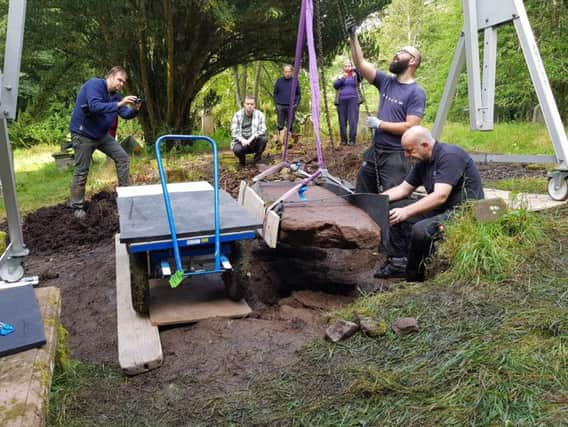1,200-year-old Pictish stone at church site is ‘once-in-a-lifetime find’


The stone, thought to have been carved 1,200 years ago, is decorated with Pictish symbols and is said by experts to be of national importance.
It is believed the stone, found at an early Christian church site in Dingwall, originally stood more than 2m high.
Advertisement
Hide AdAdvertisement
Hide AdIt is now around 1.5m, having been broken over the years and been reused as a grave marker in the 1790s.
Anne MacInnes, of the North of Scotland Archaeological Society, recognised the stone while carrying out a survey at the church. She said: “I was clearing vegetation when I spotted the carving. I couldn’t believe what I was seeing.”
The find was verified by archaeologists from Highland Council and Historic Environment Scotland before being removed from the site on Thursday.
It will be conserved with a view to putting it on public display.
Designs on the stone include mythical beasts, oxen, an animal-headed warrior with sword and shield, and a double disc and Z-rod symbol.
Details of the carvings on the reverse are not known but experts suggest that, based on similar stones, they are likely to include a large ornate Christian cross. John Borland, president of the Pictish Arts Society, said: “The discovery of the top half of a large cross slab with Pictish symbols is of national importance.
“The find spot – an early Christian site in Easter Ross – is a new location for such sculpture, so adds significant information to our knowledge of the Pictish church and its distribution.”
Kirsty Cameron, an archaeologist at Highland Council, said: “This is a once-in-a-lifetime find and what started as a small recording project has resulted in the identification of not only this important stone, but also that the site itself must be much older than anyone ever expected.